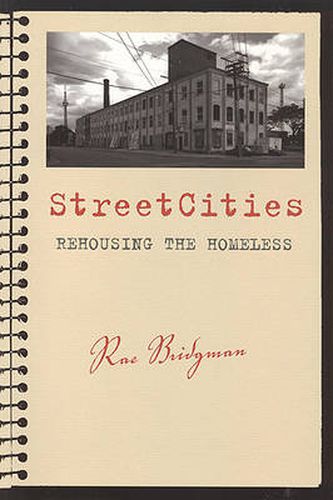Readings Newsletter
Become a Readings Member to make your shopping experience even easier.
Sign in or sign up for free!
You’re not far away from qualifying for FREE standard shipping within Australia
You’ve qualified for FREE standard shipping within Australia
The cart is loading…






StreetCities charts the development of an alternative communal housing model for chronically homeless men and women in downtown Toronto. In her recounting of the stories and narratives of residents and staff at the original StreetCity and the second generation Strachan House, Bridgman explores how living on the street (something often viewed as negative) has the potential to become a powerful emblem of community growth, tolerance, and caring. The histories of these two supportive housing projects are embedded within larger currents of governmental responses to homelessness in Canada, and the incorporation of photographs, interview narratives, and handwritten fieldnotes brings Bridgman’s ethnographic research to life. StreetCities also includes a discussion of the architectural design and operation of the two housing projects, and the eventual closing of the original StreetCity.
StreetCities is written for those who want to learn more about the work being done to help chronically homeless women and men. The book will be useful for researchers, policy-makers, service-providers, teachers, students, and activists working in the fields of homelessness and housing studies, social work, urban and applied anthropology, sociology, urban studies, and qualitative research methods.
$9.00 standard shipping within Australia
FREE standard shipping within Australia for orders over $100.00
Express & International shipping calculated at checkout
StreetCities charts the development of an alternative communal housing model for chronically homeless men and women in downtown Toronto. In her recounting of the stories and narratives of residents and staff at the original StreetCity and the second generation Strachan House, Bridgman explores how living on the street (something often viewed as negative) has the potential to become a powerful emblem of community growth, tolerance, and caring. The histories of these two supportive housing projects are embedded within larger currents of governmental responses to homelessness in Canada, and the incorporation of photographs, interview narratives, and handwritten fieldnotes brings Bridgman’s ethnographic research to life. StreetCities also includes a discussion of the architectural design and operation of the two housing projects, and the eventual closing of the original StreetCity.
StreetCities is written for those who want to learn more about the work being done to help chronically homeless women and men. The book will be useful for researchers, policy-makers, service-providers, teachers, students, and activists working in the fields of homelessness and housing studies, social work, urban and applied anthropology, sociology, urban studies, and qualitative research methods.